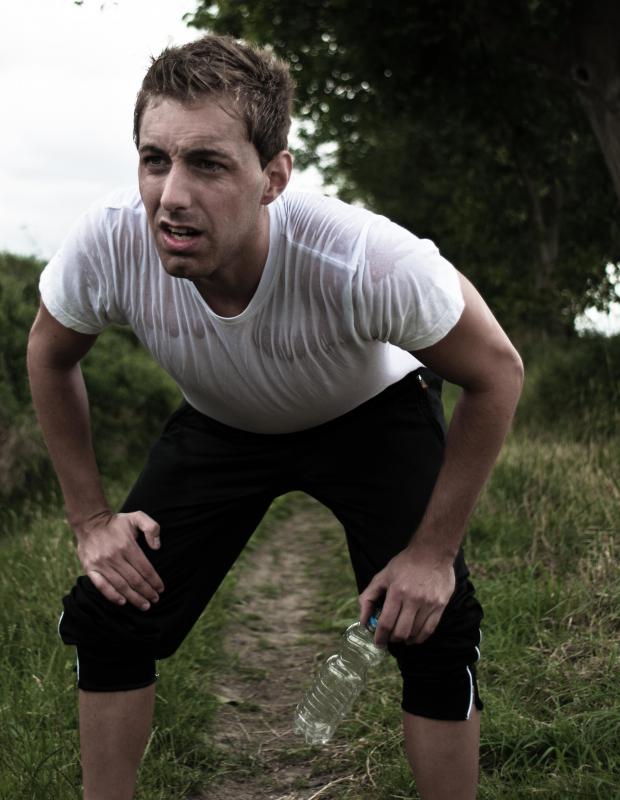At TheHealthBoard, we're committed to delivering accurate, trustworthy information. Our expert-authored content is rigorously fact-checked and sourced from credible authorities. Discover how we uphold the highest standards in providing you with reliable knowledge.
What is Dyspnea on Exertion?
Dyspnea on exertion is shortness of breath associated with regular physical activities like climbing stairs or taking a brisk walk. It can be a sign of a serious medical issue, especially if it has a sudden onset. Moderate to heavy physical activity can be associated with shortness of breath in generally healthy people who are simply out of shape, but light physical activity should not cause dyspnea, and it is a cause for concern.
People usually develop dyspnea on exertion because of underlying heart or lung disease. Congestive heart failure, arrhythmias, and other issues with the heart may cause shortness of breath, while asthma, pneumonia, chronic obstructive pulmonary disease, and cancers of the lung are also associated with it. In both cases, the body is not getting enough oxygen to meet its needs, and the patient may breathe rapidly and shallowly, feel light headed, or gasp for air. In some cases, the extremities can start to take on a bluish tinge -- a phenomenon known as cyanosis -- and the patient may feel dizzy or faint.

People who develop dyspnea on exertion may also find they feel short of breath when lying flat or while sleeping. They can develop loss of appetite, weight loss, and similar symptoms as well. If a patient has no known diseases, this can be a warning sign of a developing problem. In patients undergoing treatment for illnesses, dyspnea after exertion can be a sign that the patient's treatment is not effective and the problem is getting worse.

In an evaluation for dyspnea on exertion, the doctor will listen to the patient's heart and lungs and conduct an interview to learn more about the symptoms. Testing like spirometry to measure lung function and an electrocardiograph may be ordered. This will provide important details about how the patient's body is functioning. The patient may also be asked to exercise lightly and be monitored while this occurs in order to see how intensely the patient has to exercise for shortness of breath to start developing.

With information about the underlying cause in hand, treatments can be discussed. This can include starting or adjusting a medication regimen, making lifestyle changes, or undergoing surgery to correct a defect, remove cancerous tissue, or take other steps. In follow-up appointments, the patient will be asked about whether the problem is resolving, staying the same or getting worse, so the doctor can adjust treatment accordingly to meet the needs of the patient.
AS FEATURED ON:
AS FEATURED ON:















Discussion Comments
Is shortness of breath on exertion normal during pregnancy?
@alisha-- I'm glad to hear that your uncle is trying so hard to become healthier. I'm sure he will achieve his goals.
Has he had his lungs checked as well? Heart issues can cause dyspnea as well, but when it's triggered mainly by exertion, it's due to the lungs.
Dysnpea isn't exactly a bad thing because this is how many people find out about their health problems. Many chronic and dangerous heart and lung issues would go unnoticed if it wasn't for dyspnea. The body is trying to say that it needs help, so it's a valuable symptom if you ask me.
My uncle is very obese and also has dyspnea upon exertion. He's sort of in a vicious cycle because his doctors want him to lose weight but he can't because of the dyspnea. He has trouble breathing while walking and climbing stairs or doing any type of exercise is out of the question.
He is on medication but he still wheezes if he moves around. He's still trying though, he has put himself on a strict diet. Hopefully, if he can lose some weight this way, there will be less pressure placed on his heart and he may be able to move more.
Post your comments